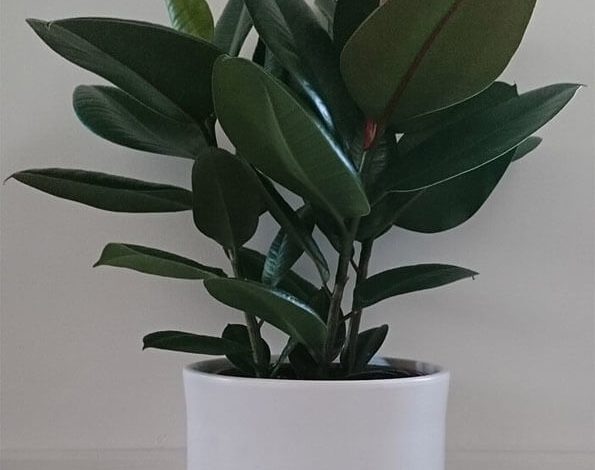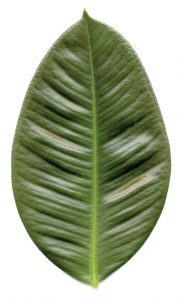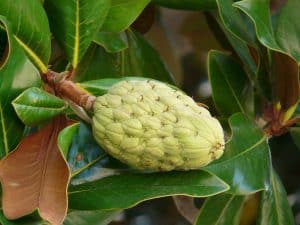Rubber tree or Ficus Elastica: [Planting, Care, Substrate and Irrigation]

 The so -called rubber tree, Hevea brasiliense, is a plant belonging to the euphorbiaceae family.
The so -called rubber tree, Hevea brasiliense, is a plant belonging to the euphorbiaceae family.
Its origin is Asian, it settles in tropical forests. It is considered an epiphytic plant, which are those of slow growth that invade other vegetables, seized by their powerful roots.
Today we will talk about one of its varieties, the elastic or rubber ficus. Considered an ornamental plant, which is also fast growing
Characteristics of the elastic or rubber ficus
One of the best known is the Ficus elastica or Gomero. It is part of the genus of the Ficus elastica or Gomero. It is part of the fig genus. It grows in northeastern India and western Indonesia, where from 1851 it began to be used as a lower plant.
Its use indoors has become popular for many years to decorate environments. And this despite the fact that it is, par excellence, a tree that grows outdoors, as long as the conditions are the most suitable for its development.
 In truth, it is a low-maintenance, easy-care plant that draws a lot of attention for its spectacular shiny oval leaves and its spectacularly elegant stylized bearing.
In truth, it is a low-maintenance, easy-care plant that draws a lot of attention for its spectacular shiny oval leaves and its spectacularly elegant stylized bearing.
There is another variety of Ficus elastica variegata where some areas of the leaves do not contain chlorophyll. Variegated plants grow even slower, because they have less chlorophyll to make up nutrients.
However, they give a sensation of greater light and the colors of their foliage are very delicate. Neither the flower nor the fruits are showy or showy.
This plant can reach up to 20 meters in height outdoors and a similar diameter in the wild or natural state.
It is advisable to always be careful not to have contact with the rubber tree latex outdoors.
Did you know…?This latex served for a long time as a raw material for the manufacture of rubber and also functions as a defensive substance.
Other Ficus of the Lyrata or Benjamina variety also produce this whitish or sometimes yellowish substance. Later, it was preferred to use the latex of the Hevea brasilensis tree as the main supplier for the rubber industry, since its sap was less irritating and harmful.
There is another variety with very dark leaves called Ficus elastica burgundy, which offers wonderful contrasts when combined with other plants with light green foliage. Use a Croton like Codiaeum variegatum and success will be resounding.
Another curious fact is that it reaches a reddish color at the tip or apex of the plant, which is complemented by the bright green of its leaves.
It adapts to living in a well-drained pot for a long time. Let’s see some particularities of the Ficus elastica that we are sure you will love.
Careful with this!
Two important warnings about the elastic ficus:
- It is a tree that in the right conditions and receiving water can become monstrously large. This is good, because it will provide excellent shade all year round. However, be careful not to plant it near a house or structure, or near other trees. Since its roots can end up giving you problems.
- This tree can also be toxic. Watch where it always is and avoid it if you have small children or pets.
Temperature: Where to plant an elastic or rubber ficus?
 It is a plant very sensitive to temperatures below zero and, therefore, to icy storms. Therefore, it lives perfectly well as an indoor plant.
It is a plant very sensitive to temperatures below zero and, therefore, to icy storms. Therefore, it lives perfectly well as an indoor plant.
Temperatures ranging from 16 to 21°C are wonderful for successful cultivation of this unique plant with very aggressive aerial roots.
It adapts well to cultivation in hot climates and very high temperatures do not suit it either.
It resists drought but its tropical origin makes it a lover of humidity.
Light: What needs do you have?
Growing at home requires a strategic location where it receives direct sunlight. Take advantage of keeping the leaves always clean under this bright space. And on balconies, terraces or sheds, he will be happy. It will shine better than ever!
Substrate and Fertilizer: How do we prepare the land?
 It does not require any specific type of soil. It does not require a specific substrate. What interests you is to be able to expand its roots well and drain excess water, in order to avoid pernicious saturation that risks the health of the plant.
It does not require any specific type of soil. It does not require a specific substrate. What interests you is to be able to expand its roots well and drain excess water, in order to avoid pernicious saturation that risks the health of the plant.
However, it is better that the soil is enriched with some fertilizer of organic origin.
Every two years it is convenient to transplant to a larger pot. At the same time, you can take advantage to renew the earth. When you do, in the spring, wear gloves to avoid direct contact with the sap or latex.
It is also good for you to do a renewal pruning, in order to strengthen it.
Irrigation: How and how often do we water?
It is absolutely essential that the Gomero grows in a pot with good drainage, because it does not like water saturation either. It is necessary not to execute excessive irrigations because fungi will appear that will ruin the plant. In addition, its precious leaves can also turn yellowish.
And as it loves humidity, from time to time it is advisable to spray or mist its good-sized oval leaves, to keep it in perfect balance.
But one of the most important functions of the Gomero or Ficus elastica is its tremendous environmental purifying power. It provides a large amount of humidity and a lot of oxygen to the environment, so it is the best helper to create relaxing environments at home and in the office. And if you have a beautiful specimen of these in your room, the feeling of well-being will be much greater.
Enjoy all the benefits of this simply sensational plant!
Sow the elastic ficus step by step
- Prepare the soil or a pot with well-removed soil.
- Introduce homemade organic matter such as compost and stir again.
- You can plant the elastic ficus by cutting or from seed (it will take longer, obviously. But it is also possible that it will grow stronger).
- Once you have planted it, it is important to lightly water the soil.
- At first keep out of direct sun and water every 2-3 days depending on how hot it is.
Fertilization of elastic ficus
 We use worm castings and compost to fertilize all of our houseplants in early spring. Worm compost is one of our favorite options.
We use worm castings and compost to fertilize all of our houseplants in early spring. Worm compost is one of our favorite options.
You can apply this sparingly to indoor grows, it’s easy to do
If combinations aren’t your thing, you may prefer a balanced liquid organic fertilizer. When it comes to houseplants, dilute it to half strength. Use it in spring and maybe again in late summer, but don’t overdo it because too much fertilizer causes burn.
Pests and diseases of this plant
This ficus, like other indoor plants, is susceptible to scale, mealybugs and spider mites. Our best advice: be vigilant, identify it early and take action.
 Neem oil or potassium soap are usually highly recommended and efficient ecological options. Annual pruning also gives good results.
Neem oil or potassium soap are usually highly recommended and efficient ecological options. Annual pruning also gives good results.
As always, avoid flooding the land where the elastic ficus is planted.
Is the elastic or rubber ficus a toxic plant?
Yes. It is a poisonous plant so we do not recommend having it indoors or in the outdoor garden if there are small children or pets.
The Rubber Plant emits a white sap when it is pruned or broken. It is irritating to the stomach and skin of our pets, so keep your cats and dogs away from this plant or do not grow it at all.
How long does the ficus elastica live?
It is a very long-lived plant, so you can get specimens that reach 200 years in good condition.
However, if they are kept in a pot, they will not last beyond 10 years of life.
How long does it take to grow the elastic ficus?
It usually takes between 5 to 8 years to grow, and can be kept in pots during that time.
How long does it take to produce fruit?
Its slow development can cause fruit production to be delayed between 5 and 8 years after planting.
Can it be grown in a pot?
Yes, although it is recommended to keep it outdoors and it does not usually last too long in this form.
It can also be used as bonsai, being a difficult process and not always carried out successfully.
How many times does the elastic ficus produce fruit?
It usually produces fruit once a year if it becomes pollinated. Otherwise, you can spend your life without bearing fruit at any time.
Should the ficus elastica be pollinated to obtain fruit?
Yes, it needs to be pollinated in order to bear fruit.
In this sense, the fig wasp is its only known pollinator, so there are areas where this species does not bear fruit.
How cold can elastic ficus tolerate?
It is very sensitive to frost, withstanding only down to -2ºC and as long as it is for short periods.
How many ficus elastica can be planted per hectare?
It is recommended that between 30 and 50 specimens per hectare be planted, since its roots are very invasive and need space to develop.
How much heat and/or drought can elastic ficus tolerate?
It adequately supports heat, being an ideal plant for coastal and tropical areas that maintain temperatures above 16ºC.
Drought is a problem for her, as she needs a certain level of humidity to stay healthy.

![Photo of Jasmine Cuttings in Water: [Grafts, Time, Rooting and Planting]](https://www.complete-gardening.com/wp-content/uploads/2022/08/jasmine-cuttings-in-water-grafts-time-rooting-and-planting-390x220.jpg)
![Photo of How to Plant Peonies in Your Garden: [Complete Guide + Step by Step]](https://www.complete-gardening.com/wp-content/uploads/2022/08/how-to-plant-peonies-in-your-garden-complete-guide-step-by-step-390x220.jpg)
![Photo of Garlic Weevil (Brachycerus algirus): [Characteristics, Detection, Effects and Treatment]](https://www.complete-gardening.com/wp-content/uploads/2022/08/garlic-weevil-brachycerus-algirus-characteristics-detection-effects-and-treatment-390x220.jpg)
![Photo of Peach Tree Pruning: How and When to do it? [Complete Guide]](https://www.complete-gardening.com/wp-content/uploads/2022/08/peach-tree-pruning-how-and-when-to-do-it-complete-guide.gif)